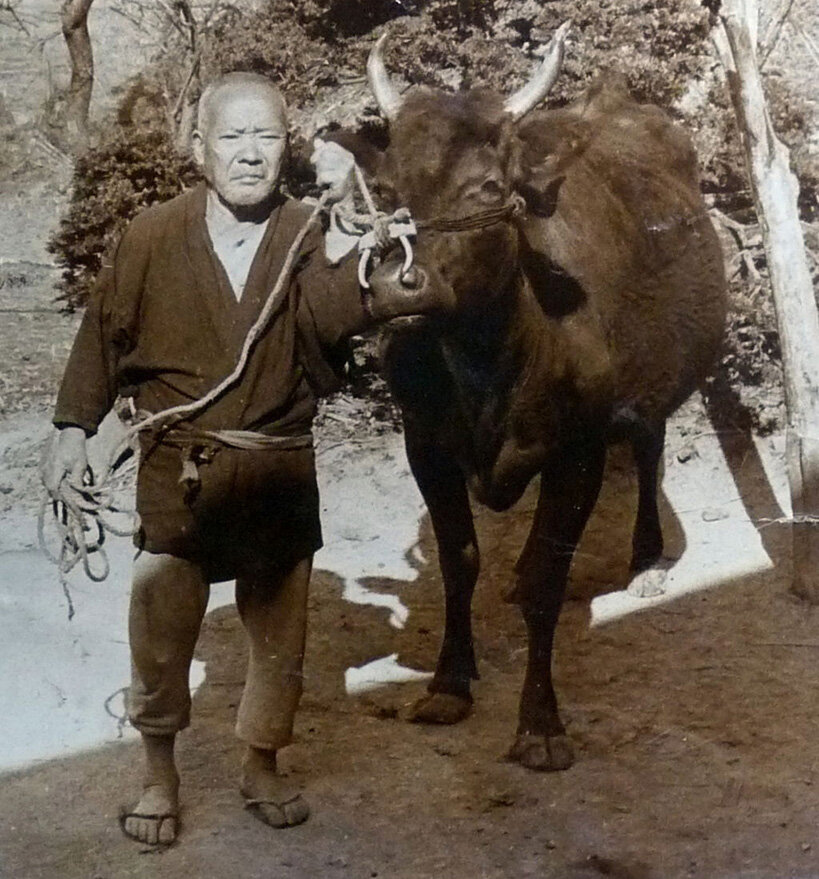The History of Japanese Wagyu

Beef started in the Jomon period

The tajima beef “tajiri”
The descendant of more than 99.9% of Japanese Black Cattle all over Japan.
In Japan, domestication is said to have begun around the Jomon and Yayoi eras, and many bovine bones have been excavated. There are also excavated items that appear to have been eaten from beef, boars, deer, hares, etc. from the shell mounds of the Yayoi period. It is said that the beef was eaten during the millennium of the Yayoi period to the Nara period because there was a decree in the Nihon Shoki and the Japanese secretary to prohibit eating meat such as beef and horses.
Civilization and beef ban
When Buddhism became established in Japan, it was forbidden to kill by law, so cows were not eaten publicly and were bred mainly as farm animals for transportation and transportation. In the Meiji era, the Christian mission was lifted and foreigners entered the country, increasing demand for beef in urban areas. There is also a record that the Meiji Emperor ate beef in the 1st year of Meiji. In 1868, the Ministry of Agriculture and Commerce started breeding Wagyu by importing Ayrshire, Brown-Swiss and Simmental. After that, after repeated improvements, it was certified under the name "Japanese Black Cattle" in 1948. 99, 99% of the Japanese black beef currently registered by the Japan Wagyu Registration Association is a single Tajima beef sire that was bred in the Ojiro district of Kami-cho, Hyogo Prefecture. Tajiri-go" is a common ancestor.

